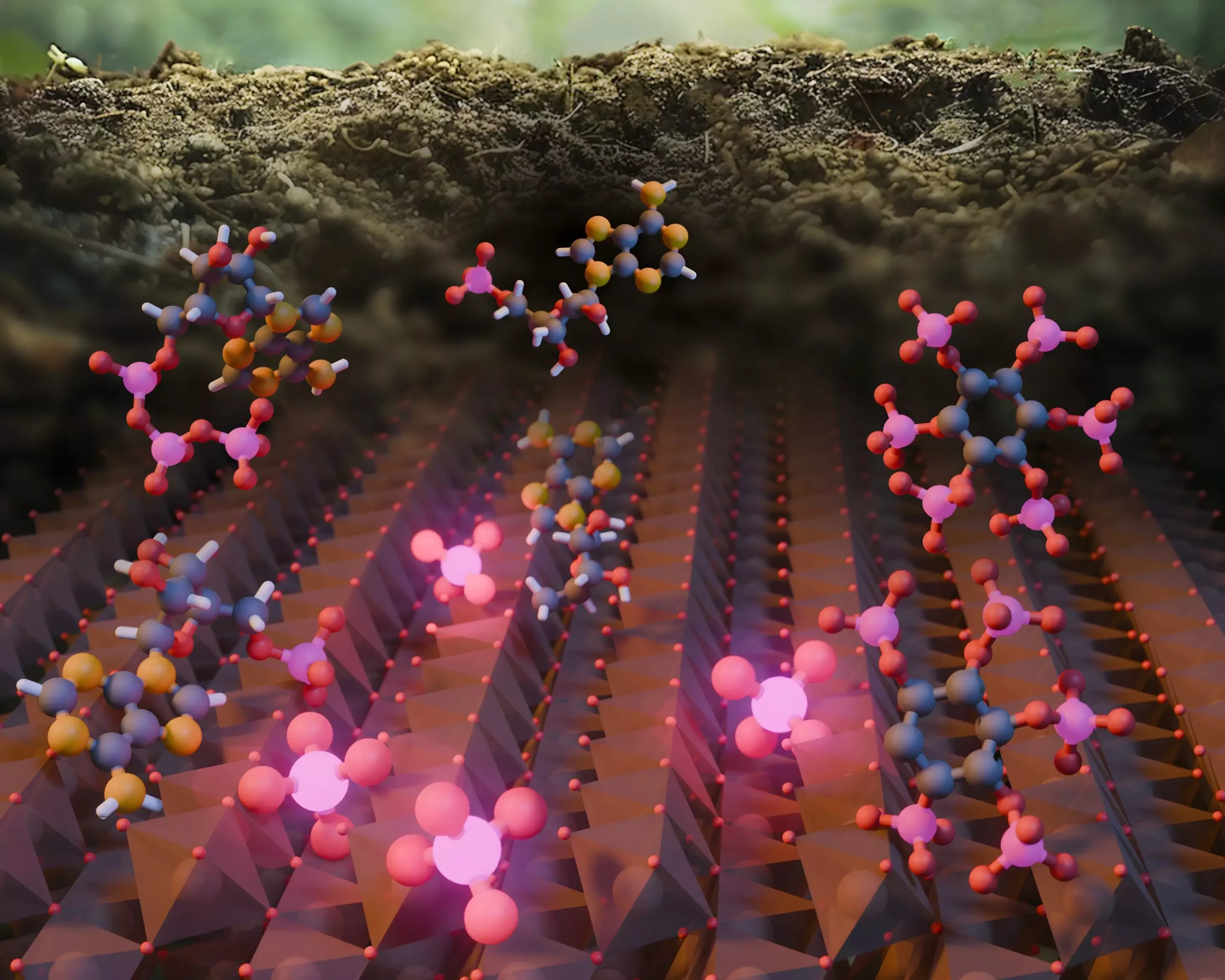A recent investigation led by researchers from Northwestern University has unearthed a revolutionary aspect of the phosphorus cycle, a critical component of Earth’s ecosystem that fundamentally supports plant growth and the global food supply. Published in Nature Communications, the study reveals that we have drastically underestimated the role of non-biological processes in the recycling of phosphorus, a nutrient that fertilizers heavily rely on. This research shifts the narrative from a purely biological understanding of nutrient cycling to a more nuanced view that incorporates mineral interactions, particularly those involving iron oxide.
Iron oxide, a naturally occurring compound found in soils and sediments, emerges as an unlikely hero in facilitating the transformation of organic phosphorus into its inorganic form. Traditionally, it was believed that only enzymes produced by plants and microbes were capable of effecting this transformation. Now, Aristilde and her team assert that iron oxide minerals can also catalyze this essential process at comparable rates to biological enzymes, suggesting that nature employs a more complex array of mechanisms than previously imagined.
Challenges in the Current Phosphorus Supply Chain
The implications of this research are profound, especially as the world faces increasing challenges in food production and security. Aristilde highlights a pertinent issue—the finite nature of phosphorus resources currently harvested through mining. Experts predict that we could exhaust these reserves within a couple of hundred years, prompting urgent calls for sustainable solutions. Understanding the natural cycles of nutrients is not just an academic exercise; it’s a necessity for devising strategies to ensure food security and agricultural stability.
Farmers globally depend on a consistent supply of inorganic phosphorus to boost crop yields, driving the need for fertilizers rich in this vital nutrient. The investigation brings to the fore the potential of leveraging natural mechanisms for recycling phosphorus, reducing our dependence on mined sources. By unraveling how minerals like iron oxide participate in this cycle, we could potentially discover ways to enhance phosphorus recycling in agricultural systems, thereby laying the groundwork for sustainable farming practices.
Enzymes Versus Minerals: A Paradigm Shift
The prevailing view that enzymes are the sole carriers of phosphorus transformation is challenged by Aristilde’s findings. By focusing on the interactions between organic phosphorus from decaying organic matter and mineral components in the soil, the research team unearthed an alternative pathway of nutrient cycling. This investigation into the chemical dynamics of nutrients underscores the inherent complexities of ecological interactions, affirming the necessity of a thorough comprehension of natural processes to inform agricultural practices.
As members of the research team meticulously conducted laboratory experiments, they were astonished to find that phosphorus was not entirely liberated into the solution—they discovered that a significant amount remained adhered to the surface of the iron oxide. Utilizing advanced X-ray techniques at the Stanford Synchrotron Radiation Lightsource allowed them to visualize these interactions and quantify the extent of phosphorus trapped on mineral surfaces. This discovery compels a reevaluation of how phosphorus is managed within ecosystems and agricultural fields.
The Bigger Picture: Implications Beyond Earth
The significance of this discovery extends beyond terrestrial applications, reaching into the realms of planetary science and astrobiology. With Mars being rich in iron oxides, the insights gained from this study could provide clues about the potential for life and nutrient cycling on other planets. Understanding phosphorus interactions in both Earth and extraterrestrial environments could have far-reaching implications for comprehending planetary habitability.
Aristilde’s research challenges scientists to broaden their perspectives on ecological dynamics and nutrient cycling. If minerals like iron oxide can perform essential functions traditionally attributed to biology, our entire framework of understanding ecosystems may need reexamining. As we explore the vastness of our solar system, the principles derived from this study could guide future missions aiming to uncover the mysteries of other worlds.
Forward-Thinking Research Directions
This pivotal work opens new avenues for research focused on mining sustainable nutrient sources and enhancing soil health. By implementing findings on mineral interactions into agricultural practices, we can innovate agricultural strategies that promote an eco-friendly approach to phosphorus management. The development of methodologies that mimic these natural processes could lead to enhanced soil fertility and crop production while significantly reducing the ecological footprint.
The innovative work by Aristilde and her team signifies a critical step toward understanding the phosphorus cycle more holistically. It challenges long-standing assumptions and highlights the intricate interplay between biology and geology, providing a more comprehensive picture of nutrient cycling that is vital for our planet’s future. The revelations about iron oxide’s role not only broaden our comprehension of Earth’s systems but also inspire fresh inquiries into the sustainability of our agricultural practices and the exploration of life beyond our planet.

